And the turtles, of course… All the turtles are free – as turtles and, maybe, all creatures should be. – Dr. Seuss
World Turtle Day (23 May each year) celebrates sea turtles and their place in the world and encourages people to take action to help protect the habitats of this ever-endangered species.
A bit about sea turtles
Sea turtles have been around for more than 100 million years. They thrived in the oceans at the time of the dinosaurs.
The first sea turtles looked very little like those of today. Their ancestors were giant land turtles and it took millions of years for sea turtles to change, for legs to become pad-shaped flippers and for heavy, bulky bodies to flatten into lighter, streamlined shapes.
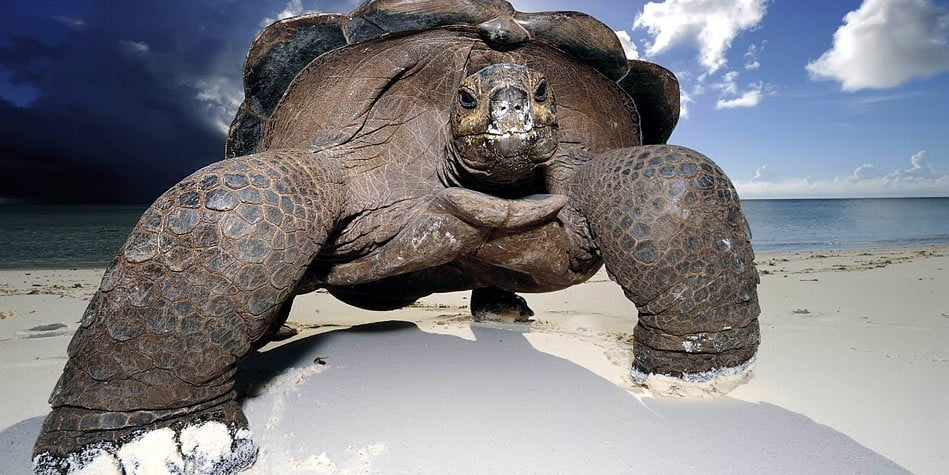
The dinosaurs and the giant land turtles are gone forever but sea turtles have evolved and lived on.

Seven different kinds still swim in warm and temperate oceans around the world.
They spend their whole lives in the water except for the brief times the females come onto land to nest and lay their eggs. The sea turtles share the sea with fish, whales, other sea creatures and you and me.
A wonder of nature
For much of their lives turtles migrate huge distances but during certain times of the year, they congregate in shallow coastal waters to breed. At this time females venture ashore on several occasions in order to lay clutches of up to 150 eggs. Around two months later tiny hatchlings emerge from the sand and make their way out to sea.
For many, the epic struggle of a fully grown turtle crawling onto a beach to excavate her nest and the subsequent emergence of hundreds of hatchlings is one of the wonders of nature.
Worldwide, six of the seven sea turtle species are classified as threatened or endangered.
Sea Turtles in Turkey
Two species of turtles live in the seas surrounding Turkey; Loggerheads (Caretta caretta) and Green Turtles (Chelonia mydas). Both are on the list of endangered species.
Iztuzu beach
Iztuzu Beach, near Dalyan, is one of the preferred loggerhead turtle nesting sites in the world.
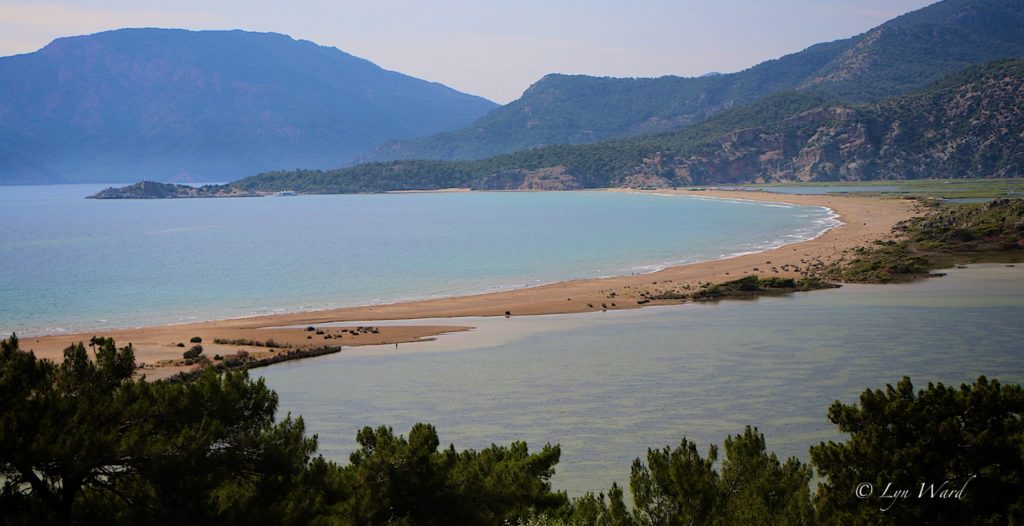
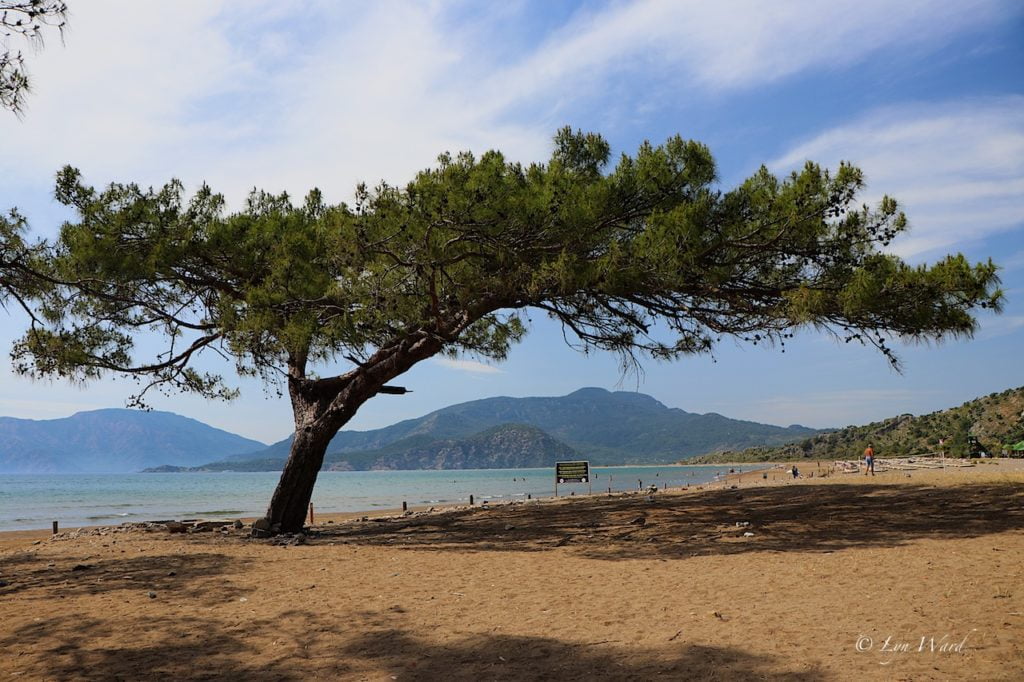
Between May and September, the female turtles come ashore at night to lay their eggs in the sand. Using their back flippers, they scoop out a nest about 40cm deep, lay between 70 and 120 soft-shelled white eggs the size of ping-pong balls, and then cover them over again. If disturbed, the females may abandon the nests and return to the sea.
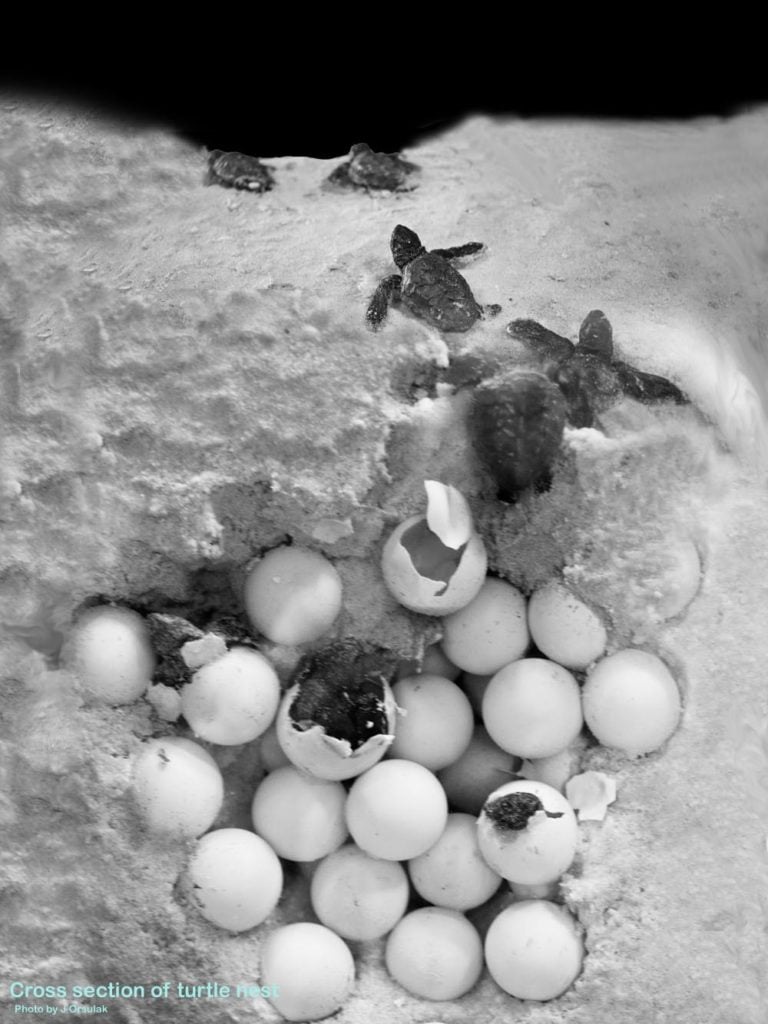
The eggs incubate in the sand for 50 to 65 days and the temperature at which they do so determines the gender of the ensuing young: below 30 degrees centigrade all the young will be male; above 30 degrees they will be female. At a steady 30 degrees, an even mix of the genders will hatch.
As soon as they’re hatched (at night when it’s cool and fewer predators are about), the young turtles make their way towards the sea, drawn by the light (the sea reflects more light than land).
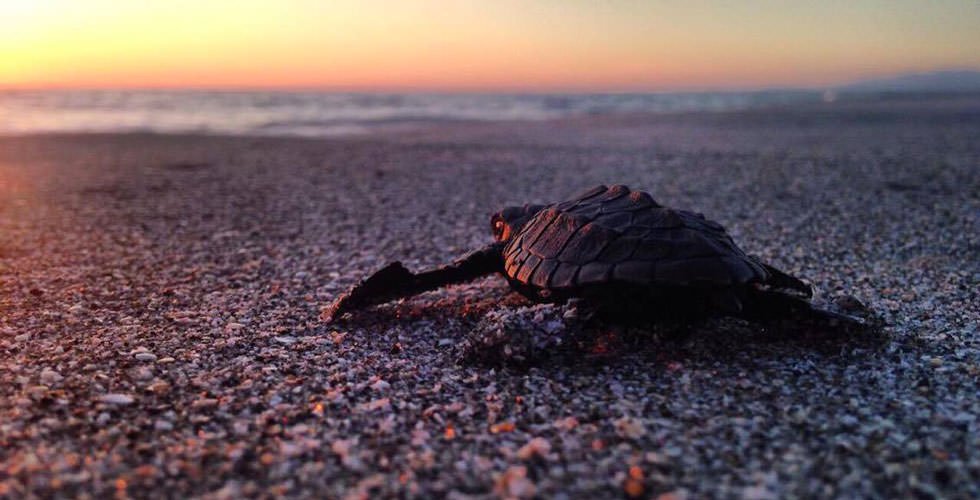
At Iztuzu beach, volunteers from the Muğla-based Sea Turtles Research, Rescue and Rehabilitation Center (DEKAMER) watch over the site to ensure the loggerheads are not disturbed while laying their eggs and returning to sea. The volunteers also protect the eggs and document the egg-laying process 24 hours a day in shifts.
Fethiye beaches
The beaches along the Fethiye coastline, including the long and sandy Çalış, Koca Çalış and Yanıklar beaches, are also some of the most important for the incubation of Loggerhead sea turtle eggs in the Mediterranean.

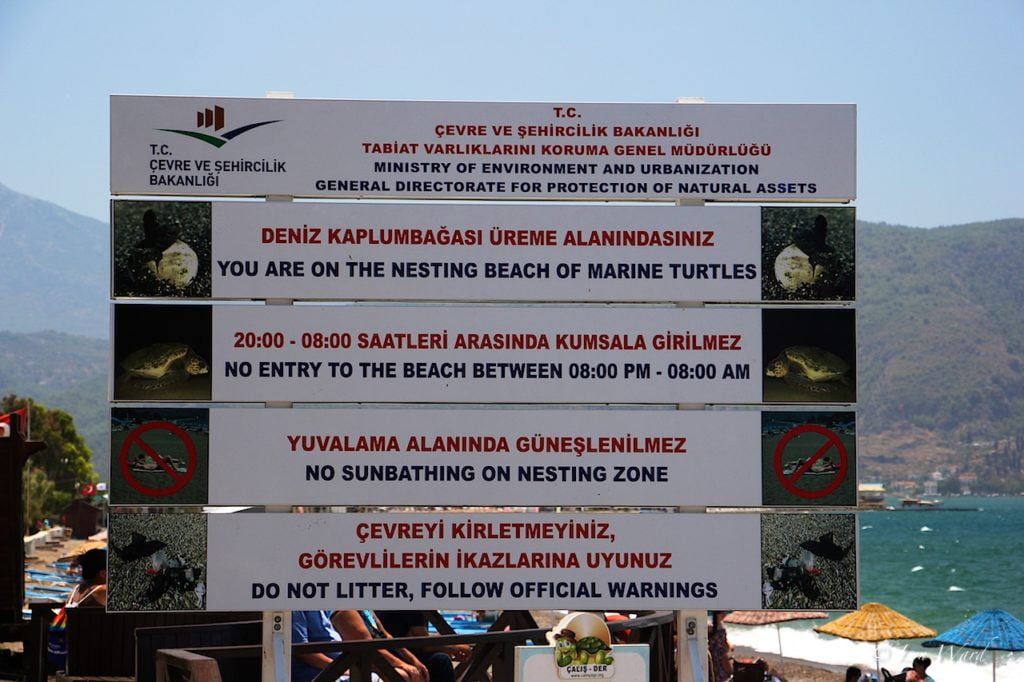
The impact of tourism
This unique life cycle has put the turtle into direct conflict with the planet’s biggest industry; tourism.
In the Mediterranean, the nesting period of the loggerhead and green turtle coincides almost exactly with the peak tourist season from May to August. Although protection measures have been introduced at some beaches it is thought their population has crashed from tens of thousands to only a few thousand since the 1950s.
How you can help to save the turtles
Be aware of sea turtle nesting areas and avoid nesting and hatching turtles
It is vitally important that you follow the code of conduct signs on turtle nesting beaches.

Sea turtles are cute, and therefore tempting to touch and observe – but flashlights and people disturb turtles when they are nesting, or trying to nest, on the beach.
Turn out lights visible from the beach
Sea turtle hatchlings use light and reflections from the moon to find their way to the water at night. Artificial lighting confuses the hatchlings and causes them to head inland instead of out to sea – putting them in dangerous situations which can lead to death. Artificial lights also discourage adult females from nesting on the beach. Short of turning off your lights, you can also take measures to shield, redirect and lower the intensity of the lights on your property.
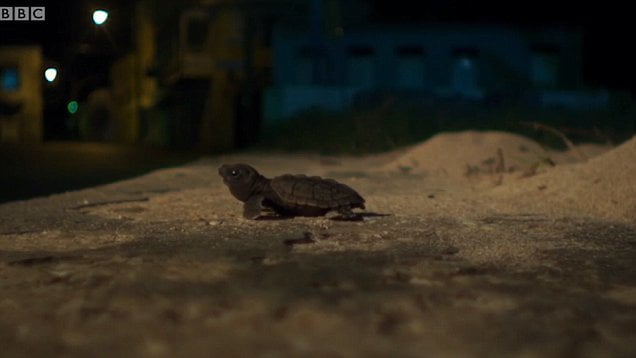
Reduce the amount of garbage you produce and clean up trash you see on the beach
It is estimated that every year 8 million metric tons of plastic end up in our oceans. Sea creatures, including turtles, mistake garbage and plastic for food which can harm them and even cause death. By limiting your use of plastic products, straws, one-time-use containers, etc. you can help improve the ocean and the turtles’ home and food supply. If you see trash on the beach, pick it up!
Whether you are here on holiday or live here, we can all make a positive difference for sea turtles
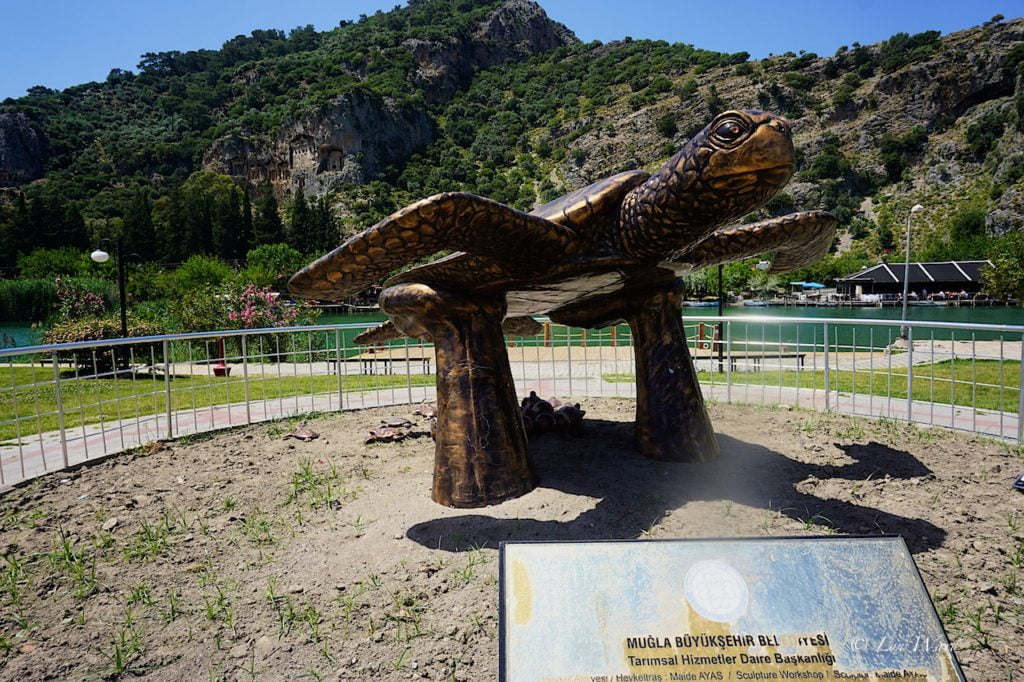
A message from this turtle in Dalyan …
“I have been in these seas and lands for a hundred and ten million years. We share Iztuzu Beach with you in the summer season. I lay my eggs on Iztuzu Beach and my offspring are able to hold onto life only if you don’t step on the eggs. Only three to five of my thousand children is able to reproduce and enable our species to continue by making it to adolescence. Because of global warming, we have become an endangered species. If you take more care of the environment and be more sensitive about it, we can live life eternally in harmony”
Featured image by Steve Parsley.
Sources: defenders.org/seeturtles.org/euroturtle.org/kultur.org.tr

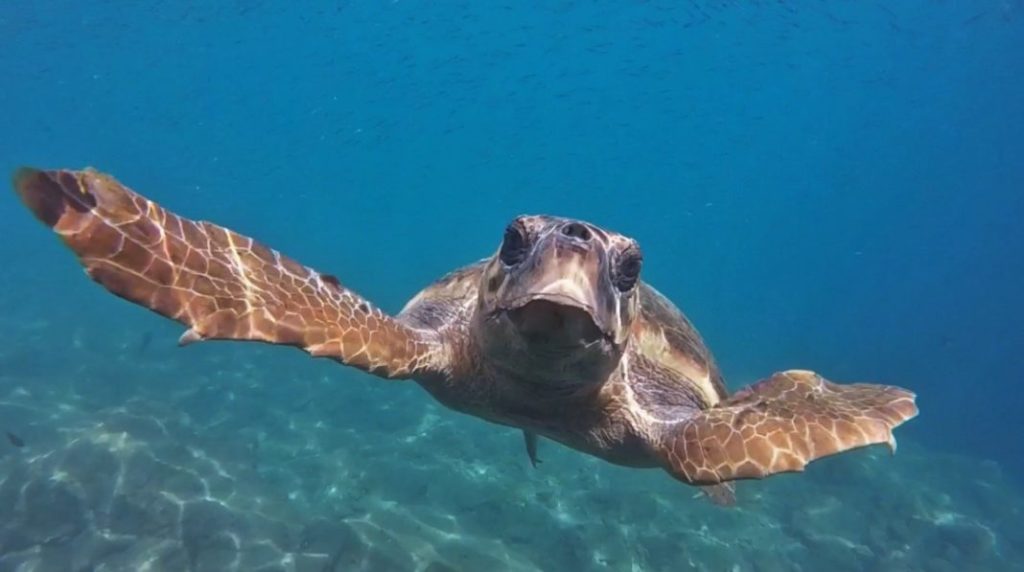







One Response
thank you for the article